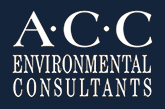Interview with Mark Sanchez, CAC, CHMM, CA/DPH, President of ACC
Water intrusion happens, whether it’s from a heavy rain, flood or plumbing malfunction, when it occurs it’s important to know how to respond to prevent mold growth. In this Interview, Mark shares his tips on how to keep water out of your building to prevent mold growth from starting and creating a hazardous situation to your tenants and maintenance workers.
Q: What proactive steps can we take to reduce the chances of water intrusion, damage & mold growth?
The main step is to get the building space as tight as possible to prevent weather intrusion. Make sure all gutters and downspouts are clean of debris and leaves and running freely. Inspect roof systems to make sure no visible issues are present such as missing flashing or missing shingles. Take other preventative steps like weather stripping and caulking of windows and doors. Inspect beneath sinks and in showers for signs of leaking pipes and drains. Act early to repair any issues before the rains come and create problems.
Q: Can you describe a worst-case scenario when someone thinks they are doing the right thing in responding to water intrusion but it goes wrong?
Number 1, if people are going to manage water intrusion in-house they have to be trained. You can’t just assume they’ll know what to do.
I was called in on an apartment job where there was a water leak. Mold was already visible. The in-house maintenance worker was trying to help and thought the best approach was to bring in blowers to dry the space. But, since mold was already visible the blowers actually increased the mold spore concentrations in the entire space making the problem much worse. In this case the apartment was still occupied so by increasing the the spore concentration in the air the health of the tenants also became a risk.
Once mold is visible, blowers should never be used. De-humidification, cleaning and/or removal in a controlled environment will be the best treatment.
It’s important to create an “Operations and Maintenance” plan and to provide training to the affected personnel so when a situation occurs everyone knows how to respond and what can be handled in-house and when an outside contractor needs to be brought in. Thinking that you’re doing the right thing can make the problem worse!
Q: How long does it take for mold to grow after a water intrusion incident?
As soon as 24-48 hours. When water intrusion is discovered you want to immediately and aggressively start to dry down the affected area. Attacking the problem within the first 24 hours is key to preventing possible mold growth.
Q: How should mold affected materials be treated if they also contain hazards like asbestos and lead paint?
This situation is something we see a lot. A restoration contractor is brought in to contain a mold problem, and in some cases, cuts into walls before testing has been done to identify if there are other hazardous materials present. If Asbestos or Lead-containing materials are determined to be present in this situation, the problem has been made worse. Now, Asbestos and Lead contamination has been added into a space in addition to the water problem.
Asbestos and Lead are heavily regulated so you need to know if they are present ahead of time so you can take precautions and prevent additional contamination. This is the type of important information that could be added to an Operations and Maintenance Manual.
Q: Are responding personnel required to have special training or protection for working with mold?
Absolutely, even though there isn’t a specific CAL-OSHA regulation, mold is recognized as a hazardous material and therefore covered under Cal-OSHA’s General Duty Clause. People react to mold differently, some may not experience symptoms in the area, but protection is still very important. During cleaning/removal activities fungal spore levels in the area will increase dramatically. Workers should wear respirators, protective clothing and gloves (especially when working with cleaning agents). Depending on the amount/surface area of mold growth containment of the work area may be necessary to protect adjacent occupants/areas.
Click here for a list of training courses
Q: What do you do when a mold is discovered?
- Here are some good steps to follow when mold is discovered:
- Follow your company’s remediation plan – we always recommend that companies develop a Mold Operations and Maintenance plan that spells out what is acceptable to do in-house and when you need to bring in an outside contractor for mold cleanup/abatement. There is nothing wrong with handling a small job in-house but it’s important to know what your limitations are – what you can safely deal with and when you need to call in help.
- Determine the problem size – how big is it? Even though there are no California regulations yet, EPA, OSHA and the Institute of Inspection Cleaning and Restoration Certification (IICRC) have issued guidelines and standards that can help you determine the scale of the problem.
- Is the space safe to occupy? There are a few factors to consider here, however the safety of tenants/ occupants is most important therefore this decision should happen as quickly as possible. These decisions are typically made based on the amount of mold growth and/or after reviewing available air sampling data. If tenants are complaining of breathing or respiratory issues, they should be removed immediately.
- Determine the cause – Is this a storm water leak, domestic water leak or sewage leak?
- Keep remediation safe – make sure everyone follows your in-house procedure or the procedure developed by your qualified consultant.
Have questions on Water Intrusion?
Contact:
ACC Environmental Consultants, Inc.
1055 Wilshire Blvd., Suite 1450
Los Angeles, CA 90017
proposal@accenv.com/ (213) 353-1240
Other helpful resources:
United States Environmental Protection Agency


